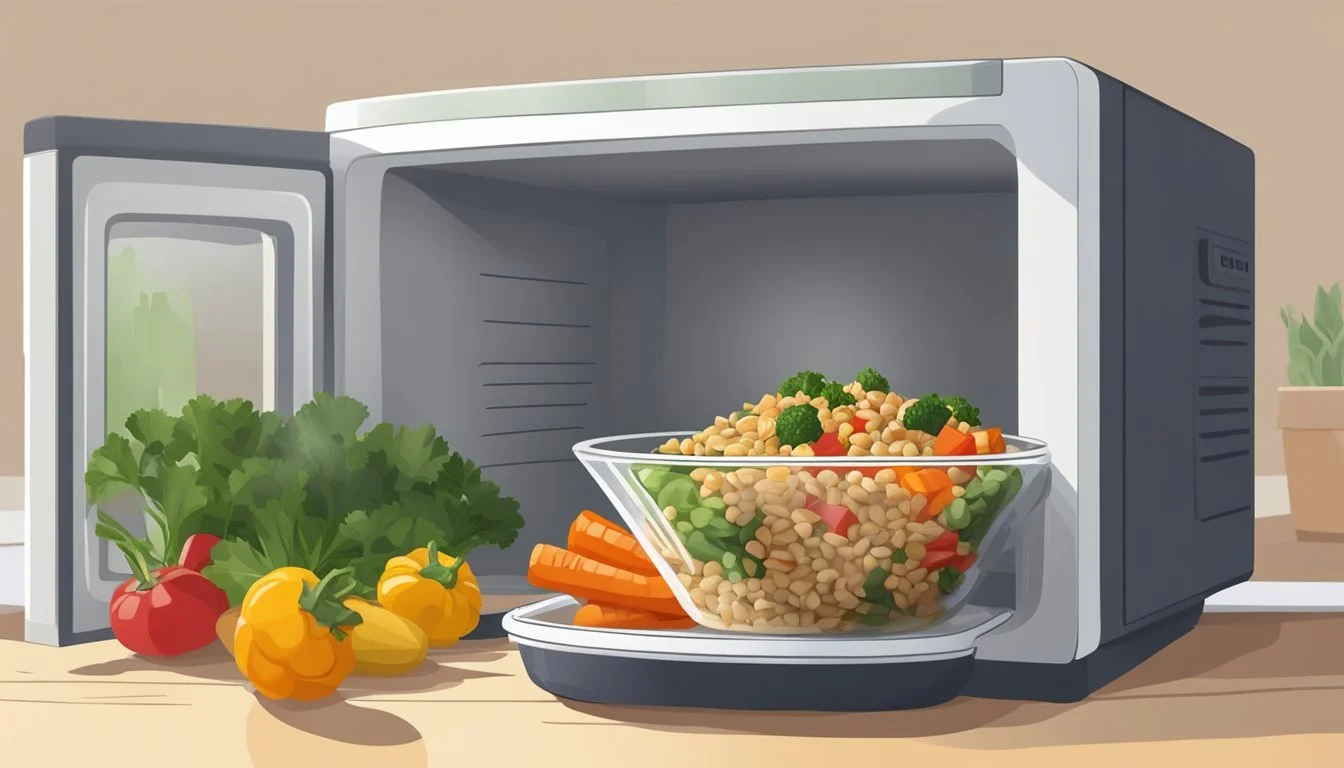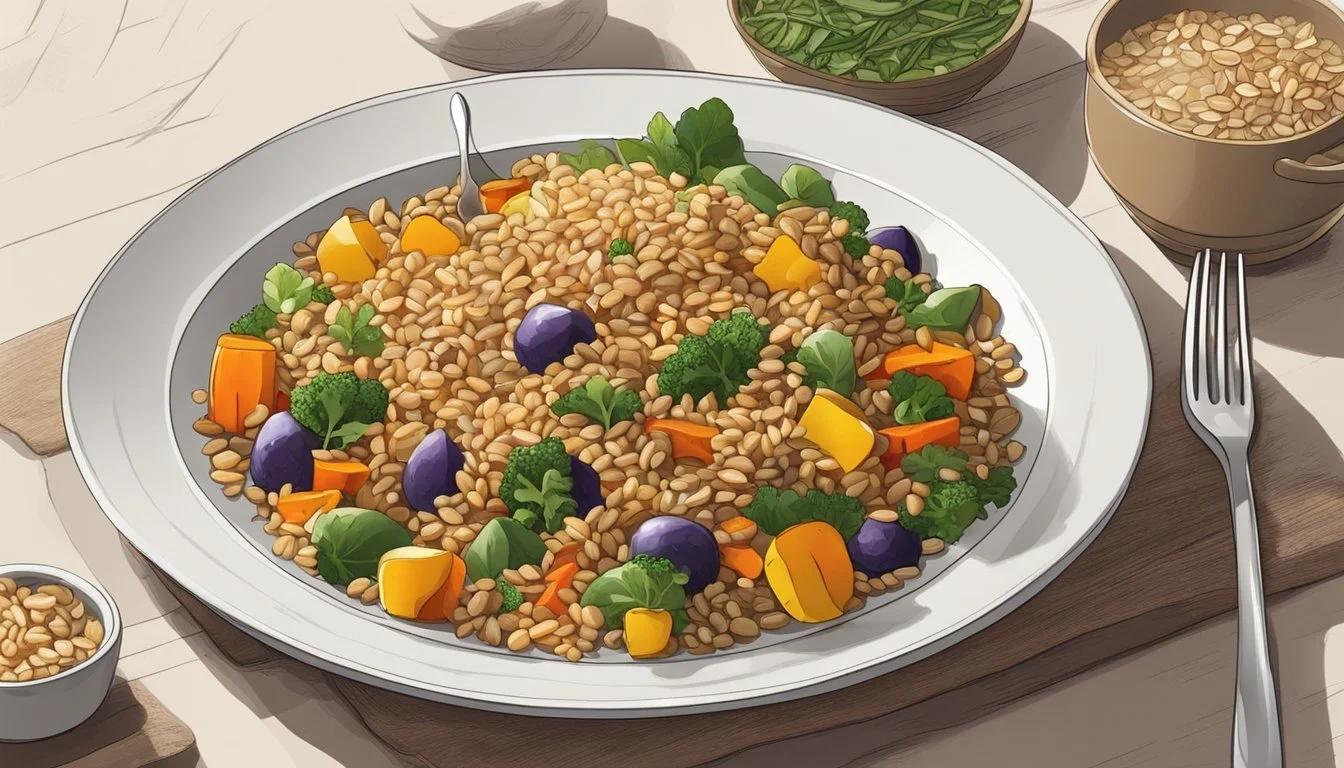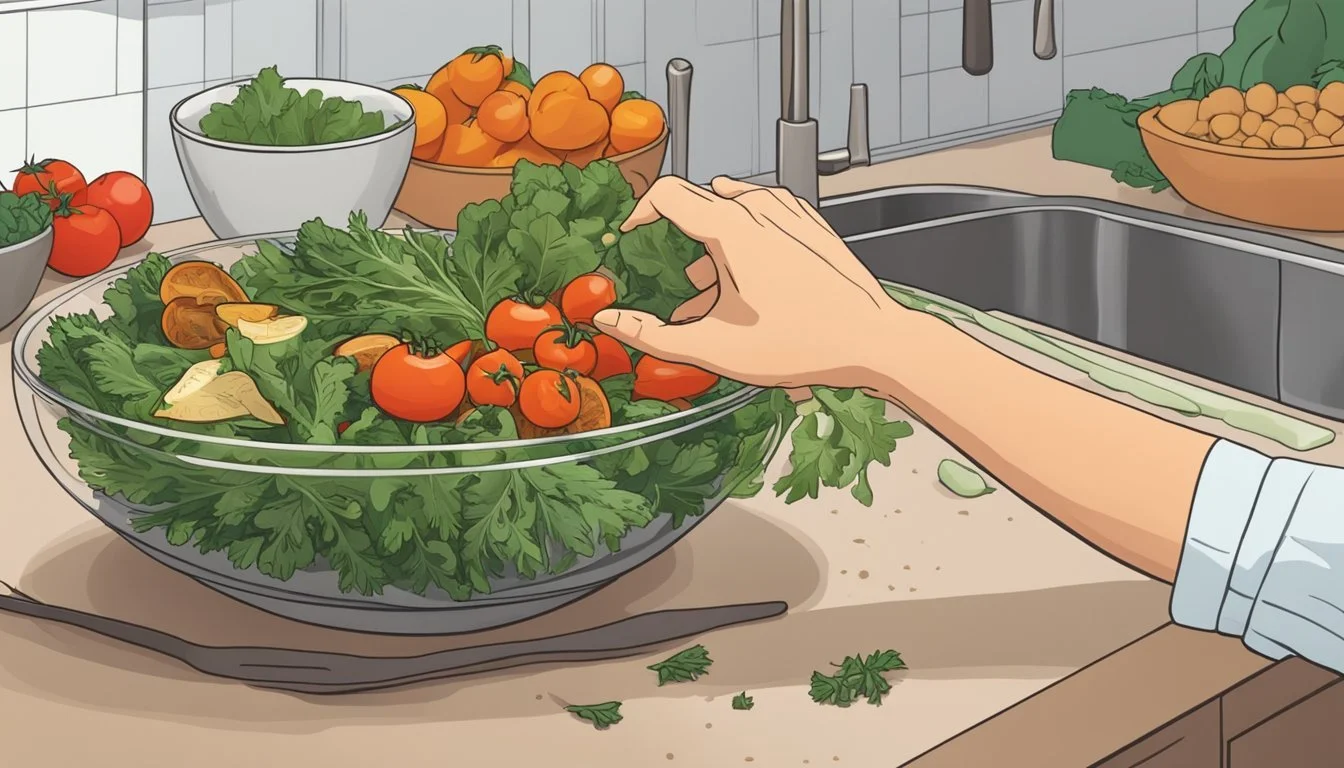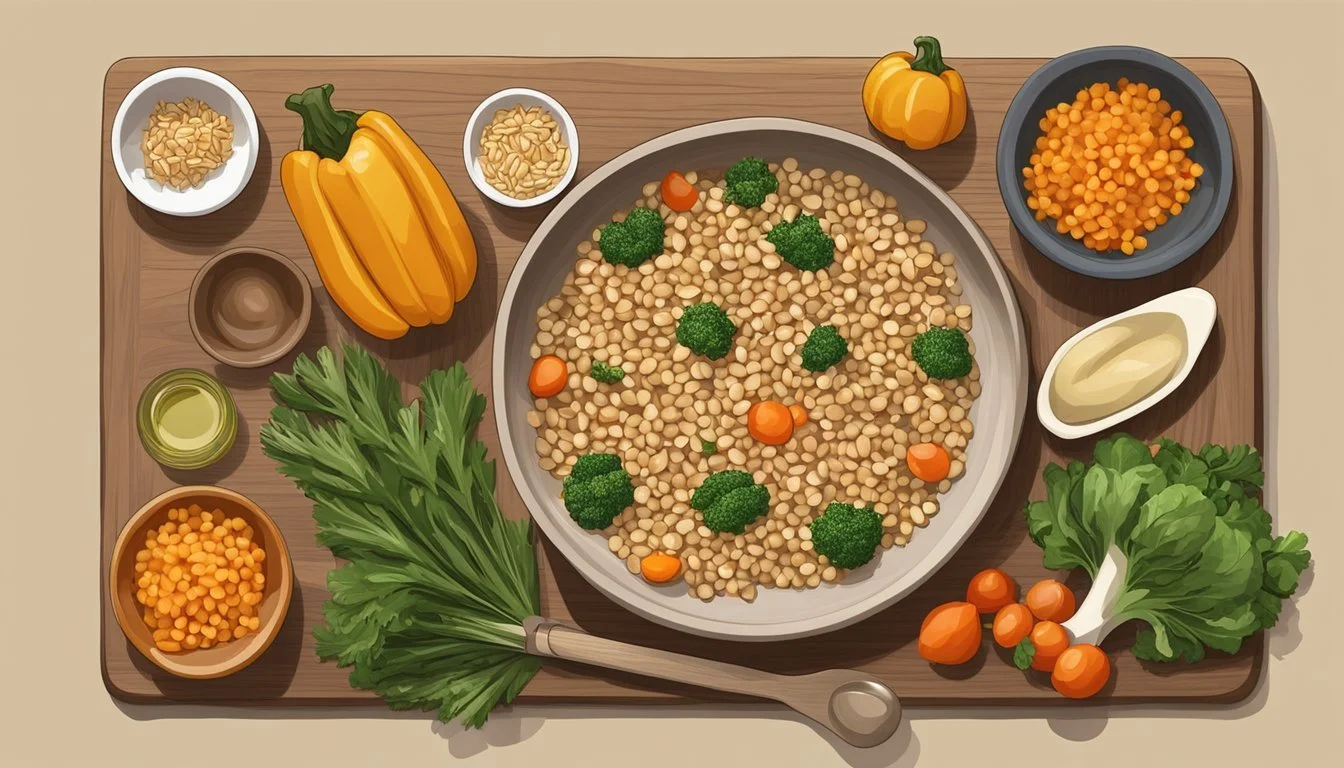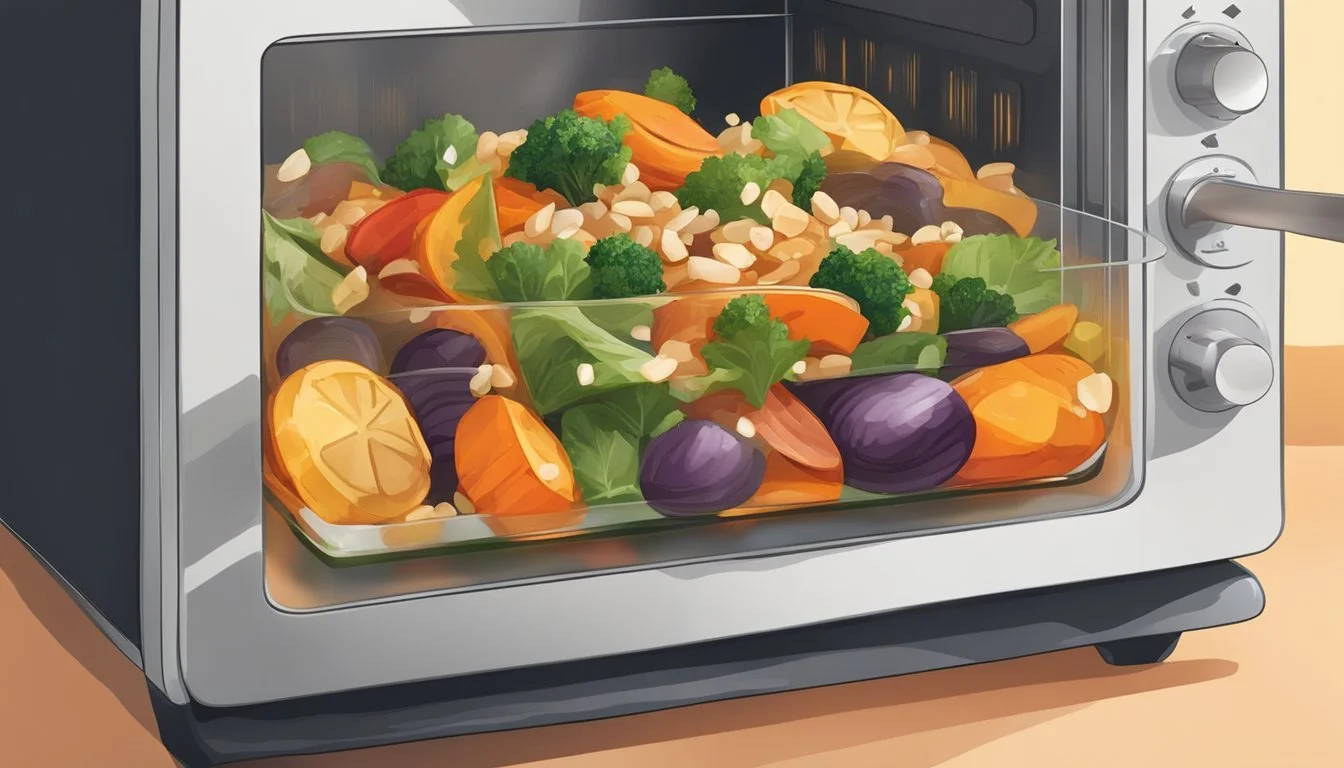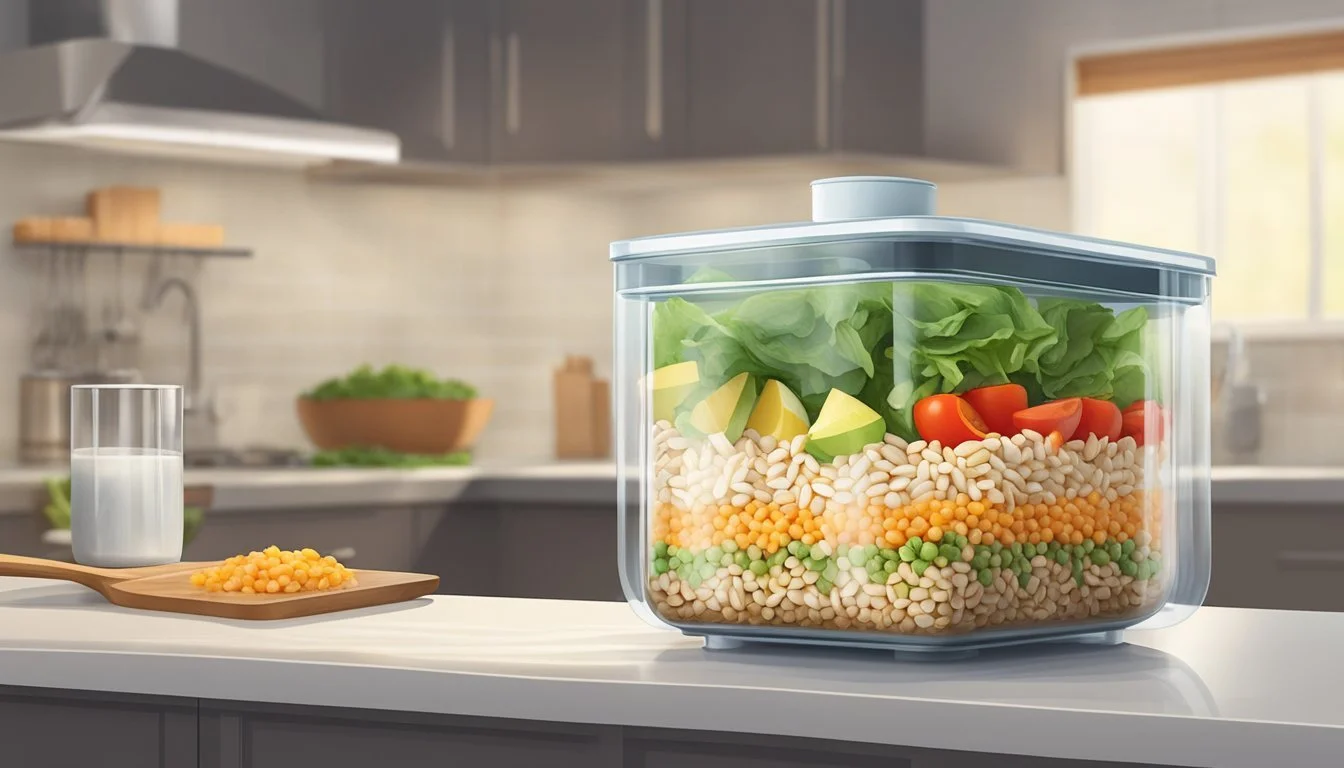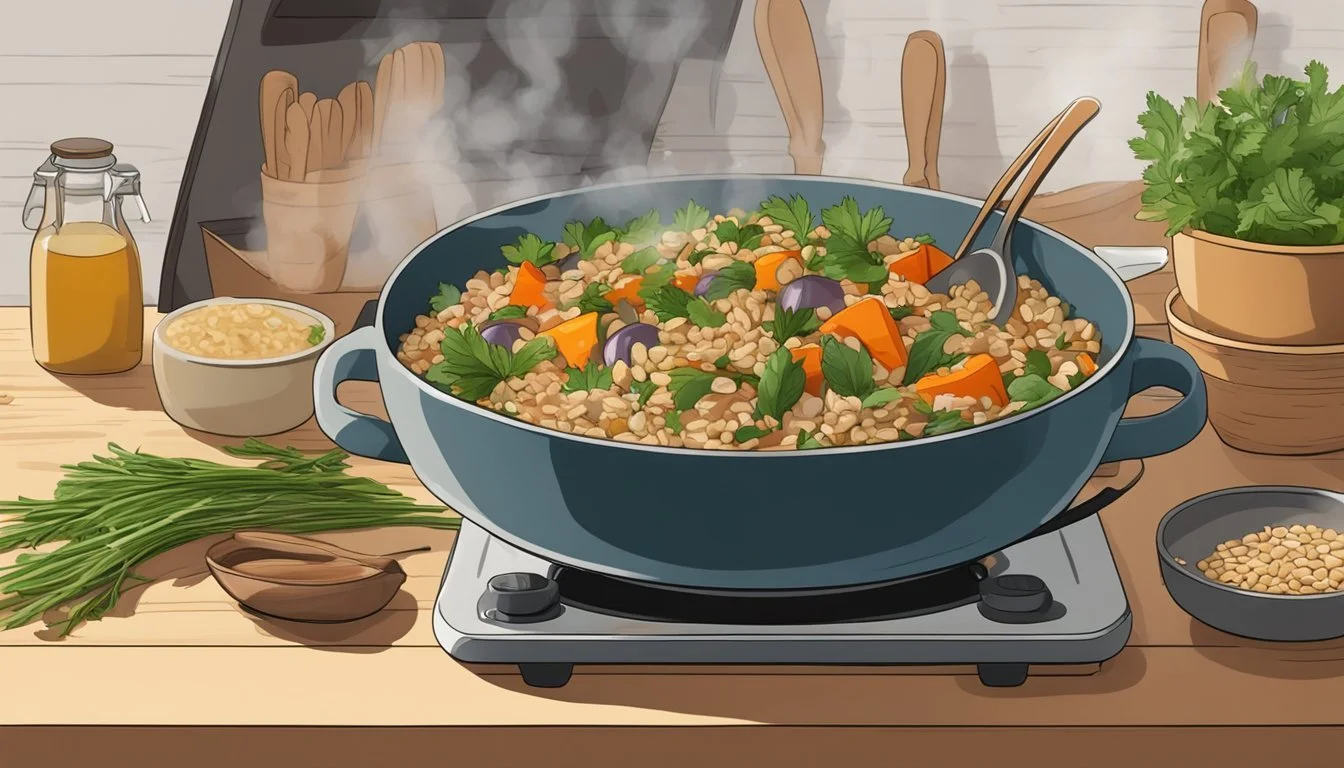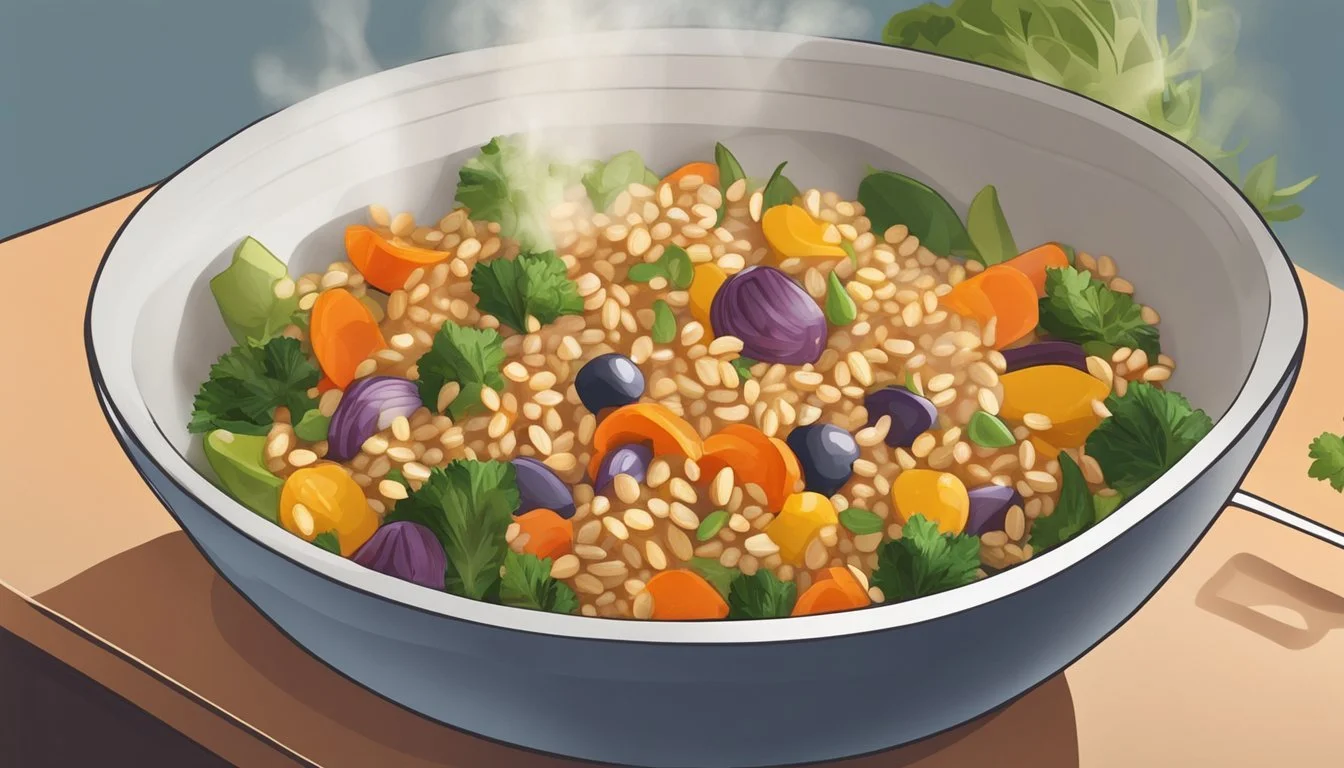How to Reheat Farro Salad with Roasted Vegetables for Optimal Taste
Reheating farro salad with roasted vegetables can be challenging if you want to maintain its original texture and flavor. For the best results, preheat your oven to between 375°F and 400°F and evenly spread the vegetables on a baking sheet to ensure even reheating. This method keeps the vegetables tender and slightly caramelized, enhancing the overall appeal of the dish.
Using fresh, high-quality ingredients like squash, carrots, and red onion can make a significant difference in the nutritional profile and taste of your farro salad. Tossing these vegetables in olive oil and seasoning them with rosemary and garlic adds a delightful aroma and flavor. Reheating in the oven also helps preserve the nutrients in the vegetables, making this a healthy, satisfying meal.
Farro salad, already noted for its chewy texture and nutty flavor, pairs perfectly with well-roasted vegetables. Cooking the farro until it’s tender yet slightly chewy provides a hearty base that complements the textures of the roasted vegetables. This combination not only creates a balanced, nutritious dish but also makes it a fulfilling meal option.
Understanding Farro
Farro, an ancient grain, is prized for its nutritional benefits and versatility. It offers a substantial amount of fiber, protein, and essential minerals, which make it a healthy addition to many dishes.
Different Types of Farro
Farro comes in three primary varieties: spelt (farro grande), emmer (farro medio), and einkorn (farro piccolo). Each type varies slightly in texture and flavor.
Spelt is the largest and has a sweet, nutty taste. Emmer, the most common in the U.S., provides a chewy texture. Einkorn is the smallest and offers the most delicate flavor.
These grains are usually available in three forms: whole, semi-pearled, and pearled. Whole farro retains all the bran, offering maximum nutritional benefits. Semi-pearled and pearled farro have some or all of the bran removed for quicker cooking times.
Nutritional Benefits of Farro
Farro is a nutrient-dense grain packed with essential nutrients. A single serving of farro delivers a substantial amount of fiber, which aids in digestion and helps maintain steady blood sugar levels.
It's also an excellent source of protein, making it a great addition for vegetarians and vegans. Farro contains important minerals like iron, magnesium, and zinc, which support various bodily functions, including oxygen transport, muscle function, and immune response.
Moreover, farro is rich in antioxidants that help combat inflammation and chronic diseases. Regular intake of farro can contribute to overall health due to its impressive nutrient profile.
Selecting Ingredients for Your Salad
When creating a farro salad with roasted vegetables, the choice of vegetables and how you customize the salad can dramatically affect its flavor and texture. Key ingredients include various vegetables, olive oil, and seasonings.
Choosing the Right Vegetables
Selecting the right vegetables is crucial. Carrots, sweet potatoes, and red onions are popular choices thanks to their natural sweetness and robust texture. Garlic can add a fragrant depth, while eggplant, zucchini, and bell peppers offer a medley of flavors.
Uniform cutting of the vegetables ensures even roasting. Olive oil, sea salt, and black pepper are essential seasonings that highlight the vegetables' natural tastes. A single layer placement on the baking sheet ensures they roast evenly, enhancing their flavors.
Customizing Your Farro Salad
Customizing your farro salad allows for creativity. Sea salt, black pepper, and olive oil are staples, but you can personalize it further.
Consider adding fresh herbs like rosemary or thyme for aromatic enhancement. Different vegetables like squash or shallots can introduce varied tastes. For additional texture, toss in nuts or seeds. Season with vinegar or a splash of citrus juice for a tangy twist.
Incorporating these elements ensures that each bite is exciting and filled with layers of complementary flavors. Personalizing the salad makes it not only nutritious but also a reflection of your culinary preferences.
Preparation of Ingredients
Proper preparation of ingredients is crucial for creating a delicious farro salad with roasted vegetables. Key steps include cooking the farro until tender, roasting a variety of vegetables to enhance their flavors, and crafting a balanced dressing to tie everything together.
Cooking Farro
Start by cooking the farro in lightly salted boiling water. Use a ratio of 1 cup of farro to 3 cups of water. Bring the water to a boil, reduce to a simmer, and cook for approximately 25-30 minutes.
Farro should be tender but slightly chewy. Drain any excess water and let the farro cool slightly. For additional flavor, consider cooking the farro in vegetable broth instead of water.
Roasting the Vegetables
Preheat the oven to 400°F (200°C). Prepare a baking sheet by lining it with parchment paper or foil.
Vegetables such as zucchini, carrots, red onion, peppers, and eggplant are ideal. Cut them into uniform pieces, about 1 inch thick. Toss the vegetables in a bowl with olive oil to coat evenly.
Spread them out on the baking sheet in a single layer. Sprinkle with salt, pepper, and herbs such as rosemary. Roast for 30-45 minutes, turning halfway, until they are tender and caramelized.
Making the Dressing
Combine 1/4 cup of olive oil, 2 tablespoons of lemon juice or balsamic vinegar, salt, and pepper in a small bowl.
Whisk until the dressing is emulsified. To add more depth, consider incorporating minced garlic or Dijon mustard. Adjust the seasoning to taste.
Drizzle the dressing over the cooled farro and roasted vegetables. Mix well to ensure even coating. The combination of acidic and rich flavors will enhance the overall taste of the salad.
Assembling the Farro Salad
In crafting a delightful Farro Salad with Roasted Vegetables, it’s essential to combine the properly cooked grains with the richly flavored vegetables, followed by adding complementary ingredients like nuts, cheese, and a well-balanced dressing.
Combining Farro and Vegetables
First, cook the farro until it is tender yet slightly chewy. Drain and let it cool to room temperature.
Next, take pre-roasted vegetables, such as eggplant, zucchini, peppers, and onions. These should be cut into uniform pieces and roasted in the oven until they are nicely browned and tender.
In a large mixing bowl, combine the cooled farro with the roasted vegetables. Toss gently to ensure even distribution of flavors and textures.
Adding the Finishing Touches
To elevate the flavor profile, add ingredients like walnuts or almonds for a crunch. Additionally, dried cranberries or similar dried fruits introduce a touch of sweetness.
Sprinkle crumbled goat cheese over the mix for a creamy, tangy twist. Freshly chopped parsley can enhance the freshness and color of the salad.
Finally, drizzle a well-balanced dressing made from olive oil, vinegar, salt, and pepper over the salad. Thoroughly toss everything together to ensure even coating.
The salad can be served immediately, at room temperature, or chilled as desired, making it versatile for different preferences and occasions.
Reheating Farro Salad
Reheating farro salad with roasted vegetables can be done effectively to maintain its nutty flavor and appealing texture. It's important to choose methods that prevent the dish from becoming overly dry or soggy.
Best Methods to Retain Texture and Flavor
Oven reheating is ideal for retaining the texture of roasted vegetables. Preheat the oven to 375°F (190°C). Spread the salad in a single layer on a baking sheet, cover with foil, and heat for 10-15 minutes. This prevents overheating the farro, which can make it mushy.
Stovetop reheating is also effective. Place the salad in a skillet over medium heat, adding a splash of water or broth to keep it moist. Stir frequently and heat for 5-7 minutes until warmed through. This method ensures even warming without drying out the ingredients.
Maintaining Nutritional Quality While Reheating
To maintain the nutritional quality, avoid overheating which can degrade some vitamins. Keep the reheating time short and temperatures moderate. Using a microwave is less ideal due to uneven heating but can be done in a pinch. Use a microwave-safe dish, cover loosely, and heat on medium power in 1-minute intervals, stirring between each interval.
When using the oven, covering the farro salad with foil helps prevent nutrient loss by retaining moisture and heat. Adding a bit of olive oil before reheating can help preserve the vitamins and minerals found in vegetables.
Serving and Pairing Suggestions
Farro salad with roasted vegetables can be enjoyed either as a satisfying main dish or as a versatile side dish. This section explores various options for serving and pairing to enhance the flavor and experience of this nutritious salad.
As a Main Dish
Farro salad can stand as a hearty main dish, especially for lunch or dinner. Protein additions like grilled chicken, shrimp, or tofu can make it more filling. The nutty flavor of farro complements these proteins well.
For a balanced plate, include a side of leafy greens like spinach or arugula. These greens can be dressed lightly with olive oil and lemon juice. This not only adds freshness but also a vivid green contrast to the roasted vegetables.
Another option is to serve the salad warm. In this case, ensure the farro and vegetables are reheated thoroughly but not overcooked. Keeping the vegetables slightly crisp adds texture to each bite, making the meal more enjoyable.
As a Side Dish
As a side dish, farro salad pairs excellently with a variety of main courses. Roasted chicken or grilled fish are particularly good matches. The earthy and slightly sweet flavors of the roasted vegetables complement the savory proteins.
For a lighter meal, the farro salad can accompany a soup or a simple sandwich. This makes for an easy yet satisfying lunch option.
To add an extra layer of flavor, consider incorporating crunchy elements such as toasted nuts like walnuts or almonds. A sprinkle of feta cheese can also provide a creamy tang that balances the roasted vegetables and farro.
Serve the farro salad at room temperature to fully appreciate the flavors. This ensures that the dish feels cohesive with a warm or cold main course, making it a versatile side for any meal.
Storing Leftover Farro Salad
Proper storage is crucial for maintaining the freshness and flavor of farro salad with roasted vegetables. Below are detailed guidelines on refrigeration and freezing methods.
Refrigeration Tips
For optimal freshness, transfer the leftover farro salad to an airtight container. It’s best to allow the salad to cool to room temperature before refrigeration to avoid condensation that can alter texture.
Layering the salad components can prevent sogginess. Place firmer vegetables on the bottom and delicate ingredients like tomatoes or greens on top.
The salad can be stored in the refrigerator for up to 4-5 days. Regularly check for any signs of spoilage such as unusual odor or discoloration.
Freezing and Thawing
Freezing farro salad can extend its shelf life. Transfer the salad to freezer-safe containers or heavy-duty freezer bags, removing as much air as possible to prevent freezer burn.
Label the containers with the date of freezing. For best quality, consume within 1-2 months.
Thaw the salad overnight in the refrigerator. Once thawed, if the salad has excessive moisture, drain it gently. Reheat if preferred, or serve cold.
By following these steps, you can efficiently handle meal prep, ensuring your farro salad remains delicious and safe to eat.
Adapting the Recipe for Dietary Restrictions
For individuals with dietary restrictions, farro salad with roasted vegetables can be adapted easily to meet different needs. Consider these specific and practical alterations to make the dish suitable for gluten-free and vegan diets.
Gluten-Free Alternatives
Farro is an ancient grain that contains gluten, making it unsuitable for those with celiac disease or gluten intolerance. Substitute farro with quinoa or brown rice. Both of these grains have similar cooking times and absorb flavors well. Quinoa is protein-rich and offers a slightly nutty flavor, while brown rice adds a chewy texture.
Adjust the roasting process of vegetables by ensuring they remain gluten-free. Use gluten-free seasonings and check that no cross-contamination occurs during preparation. When tossing vegetables with oil and spices, double-check that all ingredients, such as soy sauce or seasoning mixes, are certified gluten-free.
Vegan Variations
To adapt the farro salad for a vegan diet, the primary focus is eliminating any animal-derived products. Fortunately, the base recipe—farro and roasted vegetables—is naturally vegan. The traditional salad might include cheeses like feta or dressing containing honey. Substitute feta cheese with crumbled tofu or vegan cheese.
For dressings, replace honey with maple syrup or agave nectar. Additionally, enhance the nutrition by adding protein-rich ingredients such as chickpeas or lentils. Herbs like basil, parsley, or dill can enliven the dish without compromising on the vegan mandate. Adding nuts or seeds, such as walnuts or pumpkin seeds, provides additional texture and nutrients.
Presentation and Garnishing Tips
Proper presentation and garnishing can elevate the look and flavor of a farro salad with roasted vegetables, making it more appealing and enjoyable. Focusing on color contrast and fresh herbs can significantly enhance the visual and taste experience.
Enhancing Visual Appeal
When it comes to presentation, arranging the salad thoughtfully is key. Use wide, shallow bowls to display the colorful mix of vegetables and farro attractively. Group roasted root vegetables like carrots, beets, and sweet potatoes together for a vibrant color base.
To add freshness and brightness, incorporate cherry tomatoes halved for a pop of red. A sprinkle of fresh parsley or basil not only adds greenery but also a burst of flavor. For a finishing touch, thin lemon slices or a light drizzle of fresh lemon juice can add zest and complexity.
Consider adding thinly sliced avocado or a few toasted nuts on top for texture contrast. These small details ensure the salad is as beautiful as it is delicious.

